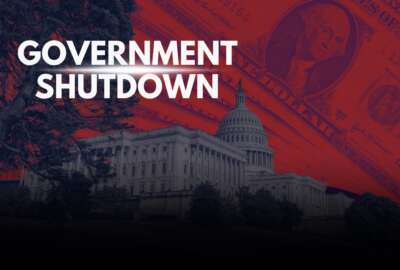OPM issues phased retirement guidance
Federal employees who choose to retire part-time and return to federal service under a new phased-retirement option will have to spend at least 20 percent of their...
Federal employees who choose to retire part-time and return to federal service under a new-phased retirement option will have to devote at least 20 percent of their time to mentoring activities, according to proposed rules from the Office of Personnel Management.
Phased retirement, approved by Congress last summer, will allow employees to partially retire and draw on half of their earned retirement benefits but continue to work part-time and earn pay. In addition, employees will continue to accrue additional benefits based on their part-time work.
“Phased retirement will encourage the most experienced federal employees to extend their contributions to the nation, and will operate as a tool to ensure continuity of operations and to facilitate knowledge management,” the draft regulations, which are set to be published in the Federal Register Wednesday, stated.
It will be up to the employing agency of the “phased retiree” — OPM’s term for those who take advantage of the new option — to determine what qualifies as a mentoring activity, according to OPM. Exceptions to the mentoring requirement must be approved by an authorized agency official.
The draft regulations also spell out broad eligibility requirements for the phased-retirement option.
Employees must have been employed on a full-time basis for the previous three years and be eligible for immediate retirement — which varies depending on whether the employee is under the Federal Employees Retirement System or the legacy Civil Service Retirement System — to qualify for the phased option. Both the agency and the employee must also agree to the arrangement.
Law-enforcement employees and other employees subject to mandatory retirement, such as air traffic controllers and most Customs and Border Protection officers, are not eligible for the option.
An employee can return to full-time employment after entering phased retirement as long as his or her agency agrees to the change, the rules stated. However, phased retirees who enter back into full-time employment are barred from returning to phased status, according to the draft rules.
On the other hand, the transition from phased retirement to full retirement will generally be the same as for other employees, the regulations stated. Phased retirees do not have to get permission from their agencies to fully retire.
When a phased retiree fully retirees, he or she will receive what OPM is calling a “composite retirement annuity.” That will consist of the annuity earned while the employee was in phased status as well as the remaining half of the regular annuity due to them.
OPM said the main purpose of the new retirement option is to provide more opportunities for the mentoring and training of employees who will fill the gaps left behind by experienced employees that retire. The government has long sought ways to maintain institutional knowledge and critical skills as long- time employees depart — an issue that has only grown in importance as ever greater numbers of employees become eligible to retire.
Previously, though, there was little economic incentive for retirement-eligible federal employees to continue in their jobs on a part-time basis since their retirement benefits would likely exceed the amount they would earn in reduced pay.
OPM said last year it was fast-tracking the writing of the new regulations and had originally expected to release them earlier this year.
RELATED STORIES
Special Report: Retirement Conundrum
OPM fast tracking draft regulations for phased retirement
OPM breaks down the basics of phased retirement
Copyright © 2024 Federal News Network. All rights reserved. This website is not intended for users located within the European Economic Area.





